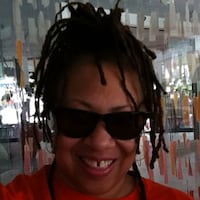Dawud Anyabwile pulls up a photo on his computer.
In it, there’s a book about former South African president Nelson Mandela and next to it a copy of a “Brotherman: Dictator of Discipline” comic book at a bookstore in Dallas.
One is based on a freedom fighter who fought to end the brutal system of apartheid. The other is based on heroes who try to make their African American communities better.
One real life. One fiction.
Brotherman comics was created 23 years ago by Philadelphia-born, Emmy-winning Anyabwile, then known as David J.A. Sims; and his brother, Guy A. Sims.
Anyabwile, 48, an artist and one-time comic book fan, was disillusioned by superhero characters who didn’t usually look like him or other African Americans or speak to their concerns.
“The underlying theme is consciousness versus apathy,” said Anyabwile, who now lives in metro Atlanta and is a production designer at Turner Studios.
And now the Dictator of Discipline is making a comeback.
“Brotherman” is being relaunched as a full color graphic novel, through a collaboration between Anyabwile, Sims and colorist Brian McGee.
Anyabwile and his brother Guy, who writes the storylines, have also released the back issues in a three-volume trade paperback , which is available online.
The original “Brotherman” artwork is currently on exhibition through Dec. 8 at the Youth Art Connection on Auburn Avenue.
The Auburn Avenue Research Library on African American Culture and History recently hosted an artist talk with Anyabwile and a book signing with his brother Guy, who has written a youth book called “The Cold Hard Cases of Duke Denim,” a character out of the Brotherman series.
It brought exposure from an audience that may not be familiar with the library.
“Brotherman has such an amazing following and crosses several generations,” said Morris Gardner, manager of the program division and a long-time reader of the comic book. “Brotherman is a way to bring culturally relevant information to kids who may not be avid readers. “
The main character is Antonio Valor, who is fighting crime and corruption in a place called Big City. He had his public launch during the New York Black Expo in 1990.
He doesn’t wear a cape, fly or see through buildings.
He’s not a superhero per se, said Anyabwile, the father of two.
“He does, however, tap into the powers within himself that we all have,” he said. “He has his intellect, his wit. He conquers his internal fears and he has the heart to take on different situations.”
The character is patterned after some of the men Anyabwile grew up surrounded by — including his college professor and his community activist father — who often go unrecognized but “who are doing heroic feats like helping troubled kids in the neighborhood and being there for their families.”
Longtime fans reportedly include singer Lauryn Hill and Columbus, Ohio Mayor Michael B. Coleman, who is seen posing with a life-size poster of the comic’s masked “Dictator of Discipline” in a 2011 photo.
The comic book also recently had a cameo in a video by Dead Prez and Mic Crenshaw called "Superheroes."
Wandi Steward, 50, of Columbus, was an adult when she saw “Brotherman” for the first time and “was hooked immediately.”
“I was not into the standard superhero in capes and tights,” said Steward, an instructor at Columbus State University, who treasures her collection of 11 issues of the series. “Other comics books were pretty over the top and kind of silly. Brotherman looked like me. He was a brother doing the right thing and encouraging others to do the right thing.”
The black main character also resonated with Wade Harrison, of Decatur, 47.
“I used to go to the black bookstore and see his comic books,” said Harrison, an artist and merchandiser for a soft drink company. The graphics blew his mind. “It spoke to me because it was a black story and was illustrated like a graffiti artist would do or an illustrator. It was the atmosphere of the book. If you come from the urban environment you would see the symbolism in that book.”
Growing up, Anyabwile would save his lunch money to buy Marvel comic books and at one time owned about 1,000 of them.
In the 7th grade he became disillusioned with the lack of a black presence and the portrayal of those few African American characters as sidekicks mostly. He also cringed at what he saw as “hidden discrimination” in the storylines. One day he burned his collection.
But he maintained an interest in the comic book medium. With another brother, Jason, he introduced “Brotherman” in 1990 at the New York Black Expo, and within a year they were in a second printing for the first issue. Soon they were on issue No. 3.
The whole family became involved. Their focus was hitting black expos, festivals and bookstores. If the mainstream comic book conventions didn’t support them “it was fine. We were going to sell a bunch anyway.”
The life of Brotherman had various stops and starts along the way, most notably the deaths of Anyabwile’s parents two years apart. When his mother died in 1994, “everything just stopped,” because it was a family business, recalled Anyabwile. When his father died in 1996, the comic’s 11th issue was sitting in a box ready to be mailed. Once again, things came to a halt, but fans still wanted more of Brotherman and Big City.
But by then, he had a job and family. He couldn’t work on it 24/7.
“Fans may not understand why we don’t crank them out,” he said. “But our fans are patient. They still want the book and are asking for it and that’s a good sign. It ended on a cliffhanger 17 years ago and I want to finish that cliffhanger.
About the Author
The Latest
Featured


